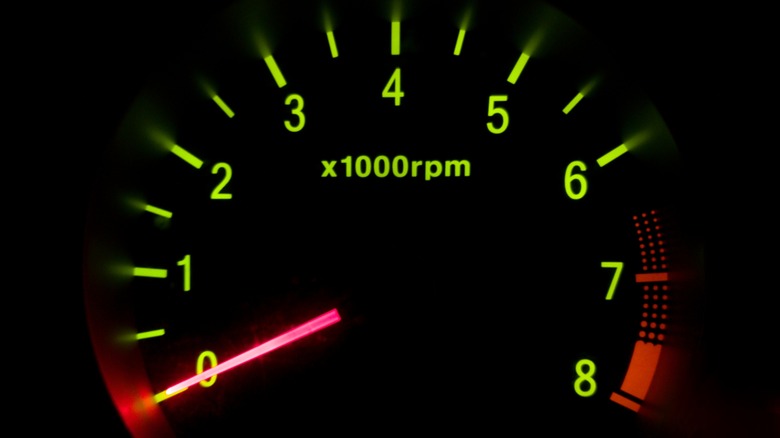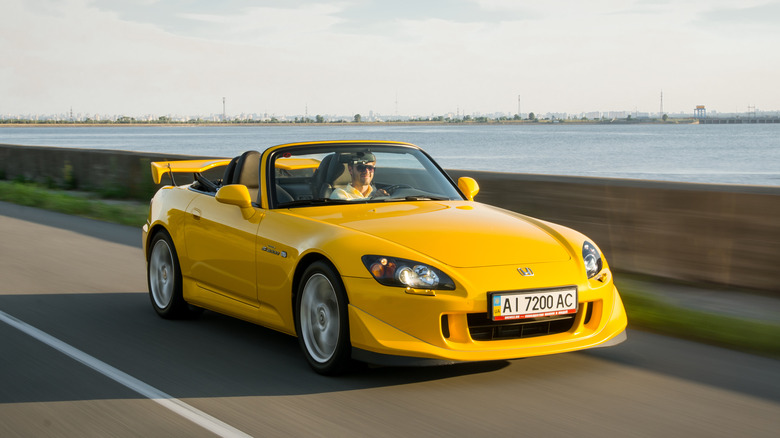What Does 'RPM' Stand For? Here's What It Means In The World Of Cars
The average modern car has a bewildering list of acronyms, and it starts from the moment you sit in the driver's seat. Upon turning the ignition or pushing the start button, a cacophony of dashboard warning lights will greet your eyes; one of them is the ABS warning light, an acronym for the Anti-lock Braking System. Some vehicles have ABS+EBD, meaning they have anti-lock braking with Electronic Brake force Distribution.
However, the most common car acronym is the RPM, and every car with an internal combustion engine will most likely have the "RPM" or "r/min" mark on the rev dial or tachometer. The RPM, or "Revolutions Per Minute" is the speed at which the engine turns at any given moment.
In other words, the tachometer displays the RPM using sensors to measure the crankshaft rotations or the duration the pistons move up and down inside the combustion chamber. The tachometer has a needle or digital display to indicate the engine speed. The RPM has a dial with single-digit numbers ranging from 1 to 9. The "revolutions per minute" is obtained by multiplying the number by 1,000.
Is it safe to rev the engine past the RPM redline?
All vehicle tachometers will have a redline that typically begins at the 6,000 to 7,000 mark. The redline is the maximum RPM rate the engine could turn at, and is the maximum safe operating zone. Revving any engine past the redline will not cause it to explode or blow up, but it could lead to accelerated wear and tear of internal engine parts caused by overheating or too much friction.
When accelerating, letting the RPM needle momentarily reach the redline mark is okay. In some cases, driving hard and allowing the engine to achieve higher RPMs is beneficial, also referred to as an "Italian tune-up" by car enthusiasts and engine tuners. In the real world, revving the engine incessantly before changing gears is unnecessary and wastes fuel. Not all engines need to rev at higher RPMs to get serious power. For instance, Honda upgraded the S2000 sports car from a 2.0-liter to a larger 2.2-liter four-banger in the AP2 version launched in 2004, mainly to address the lack of low-end torque when the engine's not spinning to its heady 8,000-plus RPM redline.
Meanwhile, diesel engines have lower redlines and typically have a maximum of 5,500 RPM on the tachometer. Unlike gas engines, diesels need fewer RPMs to pull heavy loads, making them more efficient and reliable for heavy-duty work.

